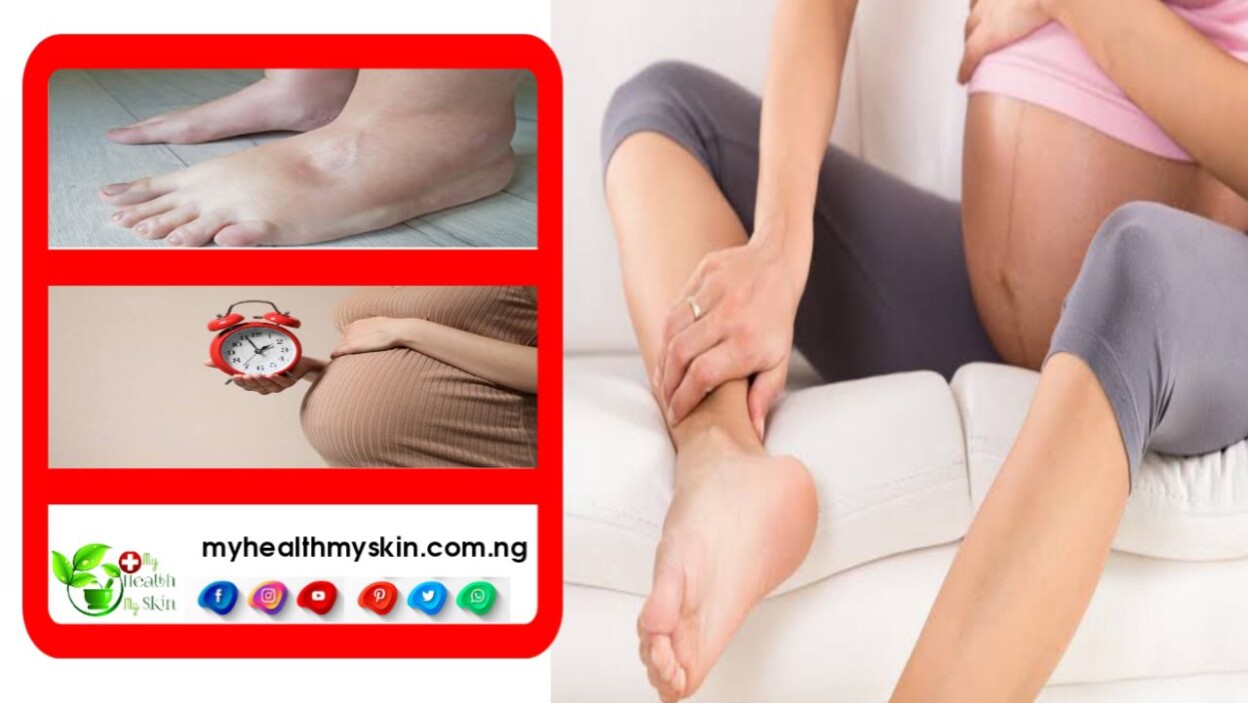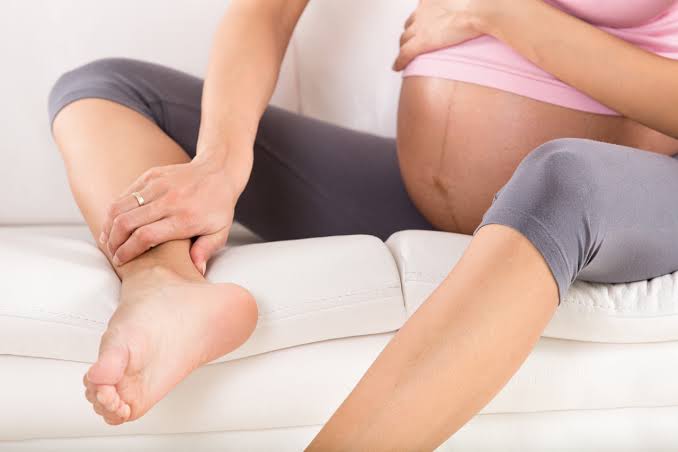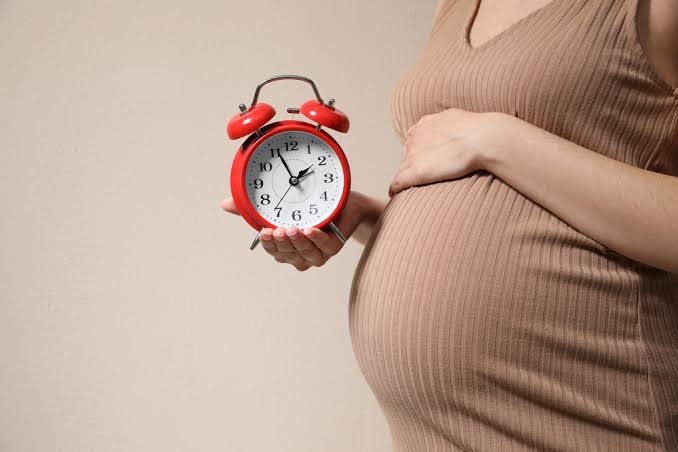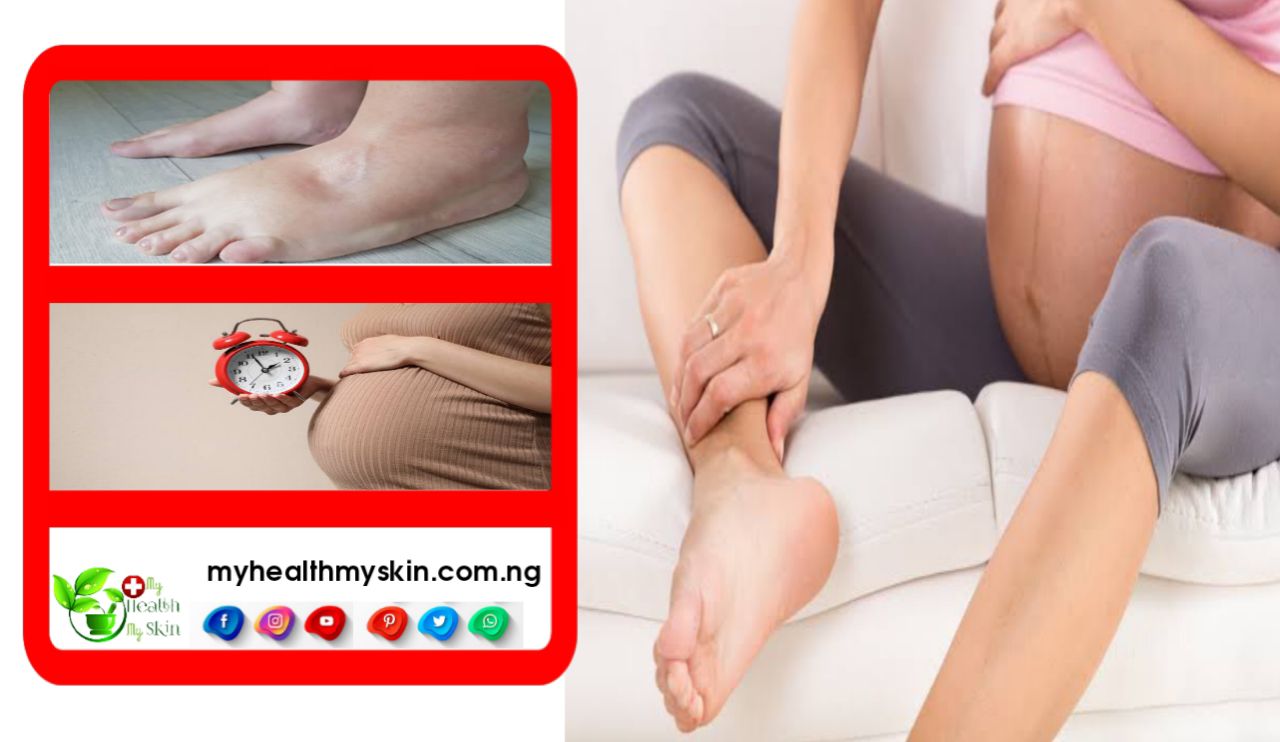Swelling during pregnancy is a common complaint for most pregnant women, especially at the end of pregnancy. Typically, the feet and ankles are the ones that tend to cause the most discomfort.
Therefore, finding comfortable shoes becomes a very difficult task in the final stretch of pregnancy. It is often necessary to opt for a larger size or more open models, to get through the end of pregnancy with well-cared for feet.
In addition to the feet and ankles, other parts of the body can also swell, such as the hands, face and legs. Rings and bracelets can start to tighten and you may need to take them off for a while.
Although, in most cases, swelling during pregnancy is just a discomfort that brings the feeling of tired and heavy legs, due to the overload on the body, it can also indicate that there is a health problem that could put the mother and baby at risk.
To guide you about this symptom, we bring you the main information about swelling during pregnancy in this guide. We will explain why it occurs, its main causes, when you need to speak to your doctor, and ways to prevent and alleviate the discomfort that edema can bring. Keep reading!
[lwptoc]
Why does swelling occur?
There are two combined factors that favor swelling during pregnancy: fluid retention and uterine growth. Swelling at the beginning of pregnancy is uncommon, being more common towards the end of pregnancy.
The increase in volume of the uterus to accommodate the developing baby compresses the organs in the abdominal cavity and also the blood vessels in the pelvic region. As a result, the blood from the legs encounters greater resistance to return to the heart, which will pump the blood again to the rest of the body.
With the greater pressure for blood to pass through the vessels, the excess liquid present in the blood leaks through the walls of the veins, causing swelling. Generally, the swelling worsens throughout the day, and the feet and legs generally feel deswollen in the morning, as spending the whole night in a horizontal position facilitates venous return (the return of blood to the heart without having to overcome the force of gravity and compressions caused by the vertical position).
With greater movement throughout the day, more time spent in an upright position and with great pressure on blood vessels, swelling and discomfort increase.
What are the main causes of swelling?
The most common cause of swelling during pregnancy is fluid retention, but there are other conditions that can also cause edema, which may indicate a health problem that requires medical attention.
1. Fluid retention
By the end of pregnancy, there is an increase in total blood volume by around 40 to 50% as a result of both the increase in plasma volume and the total mass of erythrocytes and leukocytes in the circulation to meet the needs of the mother and baby’s body.
With the increase in plasma volume, fluid retention occurs when the blood finds it difficult to circulate, leaking out of the blood vessels and starting to occupy the spaces between the cells, transforming into what we know as edema or swelling, especially in the extremities of the body. such as feet, legs and hands.
2. Excessive heat
Pregnant women who reach the end of their pregnancy in the summer suffer more from swelling than those who reach the third trimester in winter or autumn, when temperatures are milder. This is because high temperatures cause blood vessels to dilate more to help cool the body and maintain its ideal temperature.
This dilation slows down circulation, resulting in a greater accumulation of blood in the veins, which favors the escape of liquids from the blood into the tissues adjacent to the blood vessels, causing edema.
3. Thrombosis
Sudden swelling, which affects only one of the legs — especially in the calf region, accompanied by pain, a sensation of heat and redness in the skin — may indicate thrombosis, which is the formation of a clot inside a vein or artery, making it difficult to circulation.
The great risk of thrombosis during pregnancy is that it can cause damage to the placenta, which can affect the baby’s nutrition and oxygenation or even cause a pulmonary embolism in the mother — a serious respiratory pathology — if the clot breaks off and reaches the lungs.
Thrombosis is related to a coagulation disorder and can be caused by genetic factors, excessive weight gain, presence of varicose veins, use of hormones, surgeries and others. Therefore, pregnant women who have cases of the disease in the family, had thrombosis before pregnancy, gained a lot of weight, have large varicose veins or used hormones for a long time should take extra care.
Thrombosis is more common to occur in the postpartum period (up to 40 days after birth) than during pregnancy, due to the drastic hormonal changes that occur in the mother’s body.
4. Gestational diabetes
Swelling in the feet and legs is also one of the signs of gestational diabetes. This type of diabetes is difficult for pregnant women to notice because, in addition to swelling, other common symptoms of pregnancy may occur, such as excessive hunger and thirst, frequent urge to pee, extreme tiredness, blurred vision and excessive weight gain.
As the disease can be silent, it is important that every pregnant woman undergo at least three glucose tests throughout pregnancy to check blood sugar levels and start treatment as soon as possible, if the diagnosis is positive.
Prenatal consultations are also very important so that the obstetrician can monitor the swelling clinically and can request the relevant additional tests if he suspects that the pregnant woman has developed the disease.
Gestational diabetes generally disappears after the birth of the baby, however, it is necessary to follow the treatment correctly during pregnancy, as it is possible to develop type 2 diabetes after birth or have a new episode of gestational diabetes in the next pregnancy.
5. Pre-eclampsia
When the swelling is abrupt and severe, affecting mainly the face and hands, it is a warning sign of pre-eclampsia — a potentially serious condition, characterized by an excessive increase in blood pressure that can lead to eclampsia and put life at risk. of mom and baby. Therefore, any sudden swelling must be reported immediately to the obstetrician so that he can assess the health of the pregnant woman and the baby , indicating the best course of action to avoid complications.
Other symptoms of pre-eclampsia include headache and, in some cases, blurred vision with points of light, as well as loss of protein in the urine, diagnosed through laboratory testing. The problem can appear as early as the 20th week of pregnancy and needs to be monitored closely to prevent premature birth.
6. Cellulite
This cellulite has nothing to do with aesthetic cellulite, which is caused by the accumulation of fat in a specific part of the body and leaves the skin looking like an orange peel.
This is characterized by skin infection by bacteria causing edema, redness, increased local sensitivity and tingling and, in more serious cases, fever. The legs are the most affected, but it can appear on other parts of the body as well.
At what times during pregnancy does swelling occur?
Physiological swelling, which is considered normal, resulting from hormonal changes and the greater volume of liquid circulating in the pregnant woman’s body, normally occurs at the beginning of the third trimester of pregnancy, when the uterus is already greatly enlarged and exerts greater pressure on the pelvic region, compressing veins and arteries.
The swelling characteristic of pre-eclampsia can appear from the second trimester, in the 20th week of pregnancy. On warmer days, it is common for pregnant women to notice greater swelling at the end of the second trimester.
Tip: How to calculate the pregnancy weeks
When can it be considered serious?
Swelling during pregnancy is considered serious when it indicates that there is another health problem that could affect the pregnant woman and/or the baby. It is dangerous when it occurs suddenly and is generalized, and may indicate liver, kidney or heart disease. Swelling also represents a warning sign when it affects just one leg, and may be a symptom of thrombosis (blood clot) or infection.
Below, we list some warning signs for you to be aware of, speak to your doctor or go to emergency care as soon as you notice that the swelling is different from what you expected.
1. Sudden swelling
In the case of sudden swelling, which happened from one moment to the next, intensely, especially in the hands, face and feet, talk to your obstetrician or go to an emergency room to check your blood pressure and, if necessary, do more exams. Sudden swelling is one of the symptoms of pre-eclampsia and needs to be investigated and treated as soon as possible.
2. Swelling in just one of the limbs
Physiological swelling occurs uniformly, that is, legs, feet and hands swell together (symmetrical) and at the same intensity. If you have swelling in just one limb, talk to your doctor. This may be a sign of a circulatory problem that may indicate the need for closer monitoring or medical intervention.
3. Red or sensitive skin
Swelling with red or sensitive skin may be a sign of thrombosis, which requires coagulation and imaging tests to assess the extent of the problem and immediate intervention.
4. Breathing difficulties
Shortness of breath/difficulty breathing are common symptoms of late pregnancy, when the uterus presses on the organs in the abdominal cavity pushing them upward, thus reducing the space for the lungs to expand during breathing.
However, if you are bloated and suddenly experience great difficulty breathing, it is time to seek medical help, as you may be suffering from a pulmonary embolism, a serious complication of thrombosis.
How to prevent swelling during pregnancy?
It is not always possible to prevent pregnancy bumps, as they are a physiological response to the hormonal changes of this condition. Still, some simple measures help to reduce their extent and the discomfort they cause, helping the future mother to be more comfortable while waiting for the baby’s arrival.
See some tips.
1. Drink plenty of water
In addition to helping to keep you hydrated, drinking water facilitates blood circulation and stimulates the functioning of the diuretic system, reducing fluid retention and, consequently, swelling.
You can also invest in juices made with diuretic fruits, such as apple, watermelon, passion fruit, lemon, orange, strawberry and kiwi. The ideal is to make juices without or with little sugar, to prevent gestational diabetes.
2. Reduce your consumption of processed foods
Processed foods tend to contain a lot of sodium. Excess sodium increases blood pressure and favors fluid retention, increasing swelling. Choose natural and fresh foods, such as fruits and vegetables. An important tip is to reduce salt when preparing food and remove the salt shaker from the table, to avoid adding salt to already seasoned food.
3. Avoid excessive weight gain
Forget your grandmother’s saying that you’re eating for two. Having a balanced and healthy diet, with the calories necessary for you to gain the expected weight during pregnancy — 9 to 12 kilos, on average — will provide everything you and your baby need to have a full pregnancy with all the benefits. nutrients they need.
Avoiding excessive weight gain not only contributes to the prevention of swelling, it will also give you more energy to continue until the end of the pregnancy with less discomfort and problems, in addition to facilitating postpartum weight loss.
4. Avoid tight clothes and shoes
As your belly grows, your clothes will become smaller, but it is very important that you invest in some typical pregnant pieces that guarantee comfort. Avoiding tight clothes and shoes, in addition to being more comfortable, helps prevent swelling. Tight pieces make circulation difficult, favoring their enlargement.
High heel shoes should also be avoided. In addition to hindering circulation, they can cause back pain and lead to accidents involving falls, especially at the end of pregnancy, when the pregnant woman has more difficulty maintaining balance, due to the change in the body axis caused by the projection of the belly forward. and the loosening of ligaments due to pregnancy hormones.
Comfortable sneakers, sandals and flats are the best for this stage. Ideally, shoes should have a heel of two to three centimeters, to help with circulation. Flats should also be avoided, as they keep the foot flat, which does not promote circulation and puts stress on the spine, which can cause lower back pain.
5. Do light exercise
If there is no medical restriction, practicing light physical activities — walking, water aerobics, yoga, pilates, etc. — is very beneficial for reducing swelling in the legs, controlling weight gain and increasing the feeling of well-being, especially at the end of pregnancy, when anxiety about the birth of the baby and the anticipation of the birth only grow.
6. Don’t stand for too long
Avoid standing for long periods to avoid weight overload on the veins and arteries in the pelvic region, which makes swelling worse. If you spend long periods standing at work, take regular breaks to rest and take short walks to activate circulation and prevent swelling.
7. Don’t sit too long
Sitting for long periods of time also doesn’t help with swelling. The ideal is to take five-minute breaks every hour to move your feet and ankles in circular movements or take a short walk, to the bathroom or to drink water, to help blood return from the legs to the heart and avoid blood retention.
Another important recommendation is to avoid crossing your legs while sitting. The weight of one leg on the other makes circulation even more difficult, worsening fluid retention, causing cramps and tingling.
8. Wear compression socks
Compression socks are great allies to reduce the feeling of tired and heavy legs, reduce the incidence of varicose veins and improve blood circulation. All of these benefits have a direct impact on improving swelling. It is important that you use elastic stockings with medical advice, as there are different compression measures and the doctor will be able to recommend the best one for your case.
One problem with compression socks is that they are very warm, which can make them difficult to wear during the summer when swelling is worse. Evaluate the cost/benefit ratio of its use and identify what makes you most comfortable.
9. Soak your feet alternately in cold water and hot water
A great way to reduce swollen feet during pregnancy is to alternately immerse them in a basin of hot water and another of cold water. This process helps to activate circulation, facilitating the return of retained liquids to the blood and the elimination of excess liquid through urine.
After doing this process, put your legs up to relax and facilitate circulation. This is also a great time to get some affection and a foot massage from your partner or a family member or friend who wants to meet the pregnant woman’s wishes.
10. Make cold water compresses
Using a clean cloth to make cold water compresses on specific points, such as ankles or hands — which can also be dipped in a bowl of ice water — is also a good way to reduce swelling during pregnancy. Cold water helps to constrict blood vessels, preventing excessive dilation and fluid retention in the tissues.
11. Raise your hands above your heart
Swollen hands can become painful and even tingle due to difficulty in circulation. To alleviate the problem, elevate your hands above your heart to help with blood return and reduce swelling.
12. Rest with your feet elevated
Lying on your back, especially during the final stages of pregnancy, is quite difficult, which can make it difficult to sleep or rest with your feet elevated if you are lying down. If it is very uncomfortable to stay in this position, support your back, sit upright and elevate your legs with the help of pillows. This helps improve circulation and reduce swelling, especially at the end of the day.
To sleep, lie on the left side of your body and place a pillow between your legs. This helps keep your spine erect, prevents lower back pain and facilitates circulation, helping to de-puff your feet and legs.
13. Perform lymphatic drainage
Manual lymphatic drainage can be a good ally to release retained fluids and reduce swelling in the legs and feet. But pay attention! The procedure must be approved by your doctor so that it does not pose any risks to your health, as it is contraindicated in people with decompensated hypertension, vascular problems or some type of infection.
Why do legs and feet swell postpartum?
It is common for legs and feet to remain swollen for seven to ten days after giving birth. This swelling is normal and occurs due to the extravasation of liquids from the blood vessels into the tissues, as anti-diuretic hormones are secreted with the aim of retaining liquid for milk production. It gradually decreases with hormones returning to baseline levels.
However, you also need to pay attention to other postpartum signs. Excessive swelling with headaches may be a sign of hypertension or other complications due to childbirth . In these cases, you need to speak to the doctor or return to the maternity ward to check that everything is ok.
Swelling during pregnancy is a symptom that brings a lot of discomfort, but by following our tips, you can greatly reduce its incidence, having a better quality of life while you prepare to welcome your little one.
The good news is that the swelling disappears within a few days after giving birth. Be sure to talk to your doctor about any unusual swelling or other unusual symptoms. Finally, always remember that prenatal care is the best way to follow these changes during pregnancy without any scares, ensuring better health for you and your baby.
FAQS
Is it dangerous to swell your feet during pregnancy?
Swollen feet and legs is common during pregnancy and does not usually pose any harm to the health of the mother or fetus. Feet and legs become swollen during pregnancy because there is an increase in the amount of fluid and blood in the body and due to the pressure placed by the uterus on the lymphatic vessels in the pelvic region. Normally, legs and feet start to become more swollen from the 5th month onwards, becoming more and more common towards the end of pregnancy.
When should I worry about swelling during pregnancy?
If you have swelling in just one limb, talk to your doctor. This may be a sign of a circulatory problem that may indicate the need for closer monitoring or medical intervention.
Learn more about pregnancy by tapping this link.











